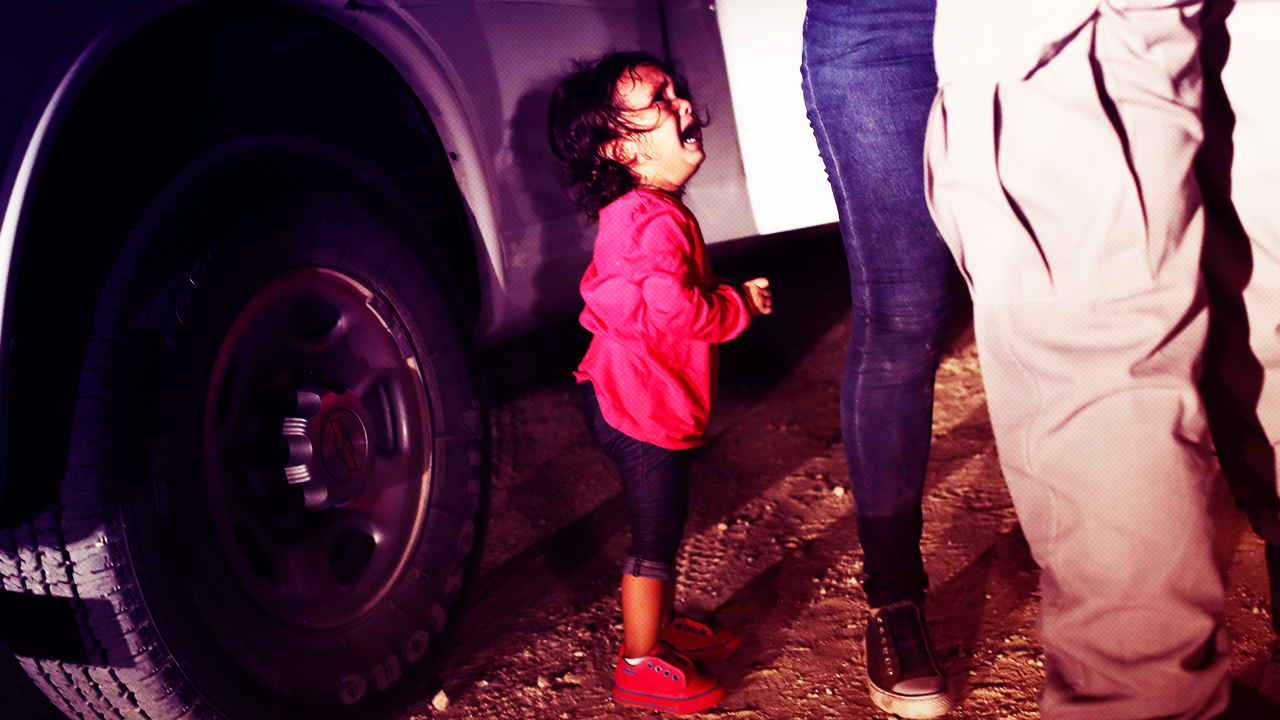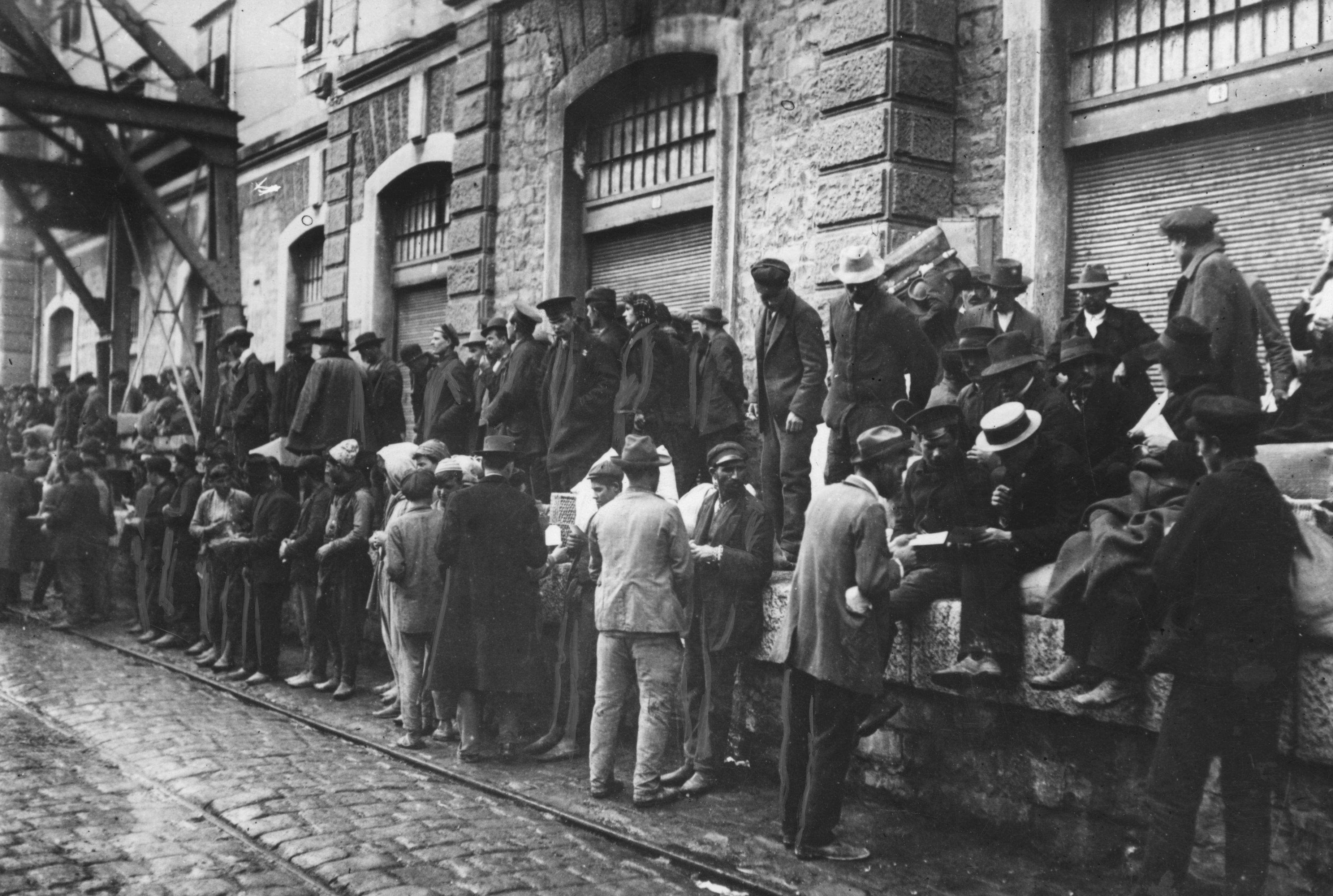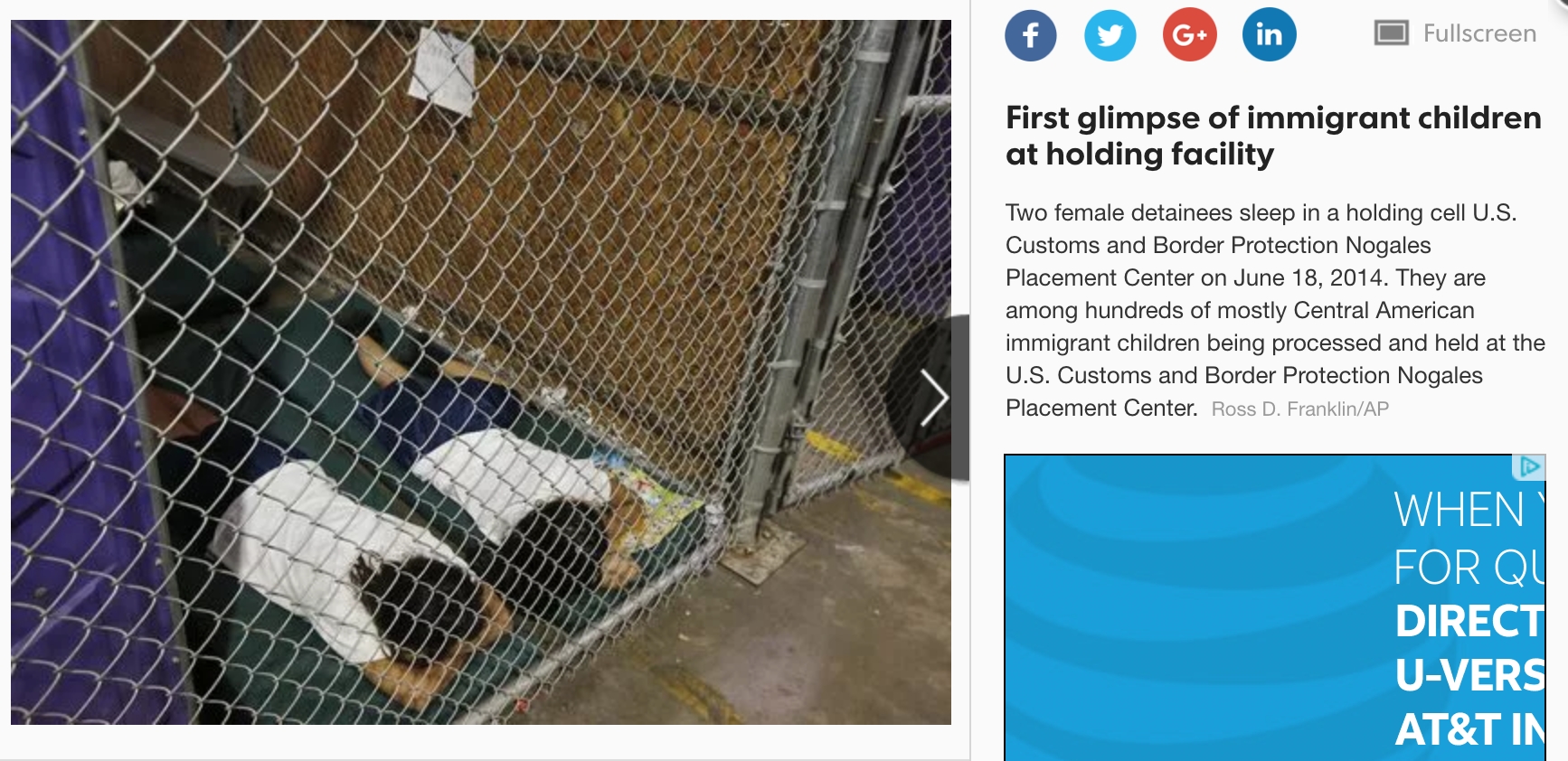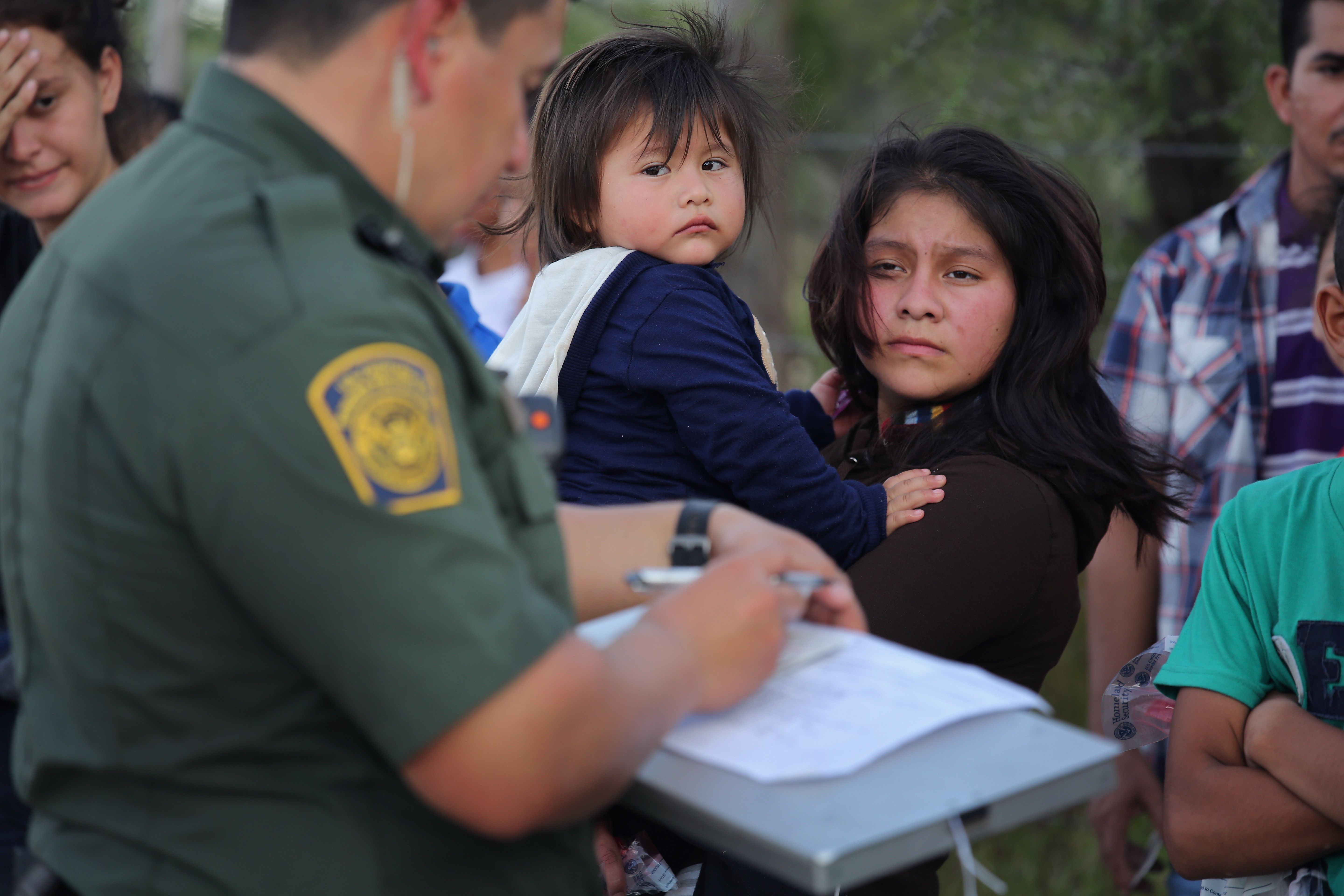
As politicians from Hilary Clinton to Mitt Romney (and the musician Pitbull) tell us over and over: “The United States was built by immigrants!” It’s a nice sentiment. An established part of our collective backstory. A signpost of national identity.
It’s also a half-truth. How easily we forget that there were entire nations thriving on this land before the first and second waves of European settlers arrived. The Puritans sowed their seeds in soil that was already being cultivated. They fashioned their homes in spaces which were vital to the indigenous people residing here for millennia. It would be deceitful to ignore the fact that — depending on how generously you view them and through which historical lens — the white people who sailed to these shores from Europe were common immigrants, religious refugees, or out-and-out land pirates.
America has never been simply defined by those coming to this country. From the beginning, it’s also been about people arriving here and the people already here responding to these arrivals — a dance that has been consistently marked by its brutality and lack of empathy by one party or another. Today, with families torn asunder along our southern borders, we’re seeing this dance play out as crudely as ever. And like so many times before (the slave trade, the stolen generations), it’s most notable for an utter absence of human compassion.
The defining difference this time is that we live in the age of information. Clicky headlines, viral images, and haunting audio files have pushed the issue front and center. In 2018, it’s virtually impossible to say “I didn’t know.” And with people finally compelled to talk about immigration the direction that the conversation proceeds from here will prove extremely telling. Will we race back to our political quadrants? Divide along religious lines? Or will an overarching sense of humanity connect rather than atomize our society?
These questions don’t just impact our present moment. They reach far beyond that. Because in one way or another, how the immigration conversation proceeds will serve to answer the biggest question in all of American culture: Who are we, as a people, and what do we stand for?

My grandparents are immigrants. They came from Italy, through Ellis Island, rented an apartment, learned trades, imprinted some part of Italian culture in America and absorbed some influence from their new home. They insisted that their only son speak English, even when they couldn’t — going so far as to keep him from learning Italian. In Italy, my grandfather baked bread in the small town of Fano, on the Adriatic. In Pittsburgh, he baked steel in grimy factories.
My partner, Nikta, is an immigrant, too. She came from Iran via Germany, in the midst of the Iran-Iraq war. Her parents played music at night to muffle the sound of Tehran getting bombed, then bought her Garfield t-shirts when they arrived in the U.S. so that she could try to fit in with other kids. Her dad now drives from Orange County to Los Angeles six days a week, a 3-4 hour roundtrip commute; her mom learned to be a hairdresser and has held the same job for decades. All three of their kids have advanced degrees, pay taxes, and have never been arrested.
The origin story of my grandparents is revered as the American Dream. Nikta’s history? Not so much. At LAX protests against Trump’s famous “Muslim Ban,” she was told to “go back home” and called a terrorist. The difference? Time, mostly. My grandfather manufactured the steel that built our president’s beloved New York City, society views immigrants from his generation with sympathy (though that wasn’t the case when they arrived). But 20 years doesn’t seem to be enough psychic distance for hard-line Americans to feel as though Nikta belongs. For a large segment of our population, she and her relatives are clearly still “the other.”
“The ‘nation of immigrants’ idea has always been an exercise in national nostalgia,” Hiroshi Motomura, an expert on immigration at the UCLA School of Law told The Globe & Mail. “Every generation seems to have its anxieties and debates about immigrants. Then the country absorbs those immigrants into society, the immigrants become Americans, and a sense emerges that we are a nation of immigrants. But around the same time, new immigrants show up, and there is new anxiety and new debate about them.”
As Motomura reminds us, these conversations aren’t new. But they are playing out on a national stage, with tremendous interest, which certainly does seem unique. And they’re making both the left and the right examine feelings of what it means to “be from here” and how that idea constantly requires reevaluation.

Recently, a photo series by the AP for AZCentral tore across the internet, infiltrating both conservative and liberal echo chambers. It revealed pictures of children in kennels, isolated, sleeping with space blankets — the sort of inhumane treatment of immigrants that is closely associated with a president who has called them rapists and wants to build a wall keeping them out.
But here’s the rub: The pictures were taken in 2014, during the Obama administration.
In late May, ex-Obama speechwriter Jon Favreau tweeted the photos, then had to follow them by tweeting a lengthy apology. In it, he explained some differences between Obama’s approach to immigration and Trump’s, but he also did some pretty heavy benefit-of-the-doubt-offering to his side of the argument — thereby illustrating a utilitarian constant in the immigration debate: The belief that “my side wants what’s best for the largest number of people.”
As tens of thousands of liberals raced to delete tweets and Facebook statuses, Trump and his followers took a sort of giddy joy in a vocal member of the opposition making such a clumsy mistake. But the president never vowed to be better; to be more human in his approach.
Democrats mistakenly tweet 2014 pictures from Obama’s term showing children from the Border in steel cages. They thought it was recent pictures in order to make us look bad, but backfires. Dems must agree to Wall and new Border Protection for good of country…Bipartisan Bill!
— Donald J. Trump (@realDonaldTrump) May 29, 2018
The AZCentral photos aren’t as much of an anomaly as Favreau would like to believe. A grim Senate Report detailing immigrant children being delivered to the hands of human traffickers also landed during the Obama regime. In May, systemic abuse of children by US Border agents was revealed — filled with the damning firsthand accounts of 116 unaccompanied minors. Once again, its dataset completely falls under 44’s watch.
The explanation here is simple and tough to argue: President Barack Obama was not perfect on the matter of immigration. Trump has been correct to state that some of his practices (even the notorious “Muslim Ban“) are loose reinterpretations of Obama-era policies. Because, as the ex-president discovered, immigration is shockingly complicated. Open borders and closed borders are both impossible and impractical. That means a Commander-in-Chief must lay claim to some sort of middle ground and that middle ground is going to be nebulous.
Every election, we, as a society, are charged with deciding how to handle people immigrating to the land that we stole and stole again and cultivated with slave labor — which is both hugely important and enormously difficult. It’s a massive task which has mostly been ignored by the mainstream, except when it can be reduced to easily digestible soundbites to appease polarized voting bases. Which is why so much misinformation and misunderstanding abounds.
Moving forward, thoughtful engagement in the immigration conversation — Who gets to come here? Who gets to stay? Why? When? — is crucial to how we grow as a culture. But that conversation will have to be put off, as first we must answer to children wailing for their parents and being mocked in their pain. Separating families is a Rubicon and, having crossed it, the issue becomes far more clear-cut.

Here is where it all stands right now: As part of Trump’s attempt to scare people out of immigrating to the United States, he’s instituted a “zero tolerance” policy, which separates families as a deterrent to immigrating illegally. We know that. This piece of the policy is not written into law, it was enacted (and excitedly endorsed) by our attorney general and could be undone immediately. Its continuation illustrates the administration’s deep empathy deficit. It also reveals our nation’s collective capacity for cruelty, which has been well documented historically, and underscores our readiness to accept inhumane “means” to achieve some longed-for “end.”
Suddenly, this deeply complicated debate — which has been part of our country since its founding days, which is intrinsic to how we view ourselves, which is so loaded with fault by so many parties over so many generations — has been turned back into a binary: Do you care about humans more than party politics or not?
So… do you? Will we Americans come together across ideological lines, as all five living first ladies have done, to demand compassion for society’s most vulnerable members? Will we recognize that the emotional trauma being created isn’t a price we should be willing to pay? Will we put aside our other thoughts on immigration in general and listen to our religious, social, and thought leaders — virtually all of whom have condemned these actions?
Because anyone who governs with the heart — not even the heart first, just any sense of heart — is on the same page here. Babies are being ripped from their mothers and it is wrong. It is immoral. Children are crying and being mocked for their pain and it is repugnant. It is at once perfectly in line with our nation’s history and absolutely horrifying. But at least we know about it now. And with knowledge comes a burden. A burden to clamor together, like an orchestra of people who are grossed the fuck out by what is happening, to stop this mess.
We have to. It will define who we are as individuals. And as a nation. And its importance can’t be overstated.
